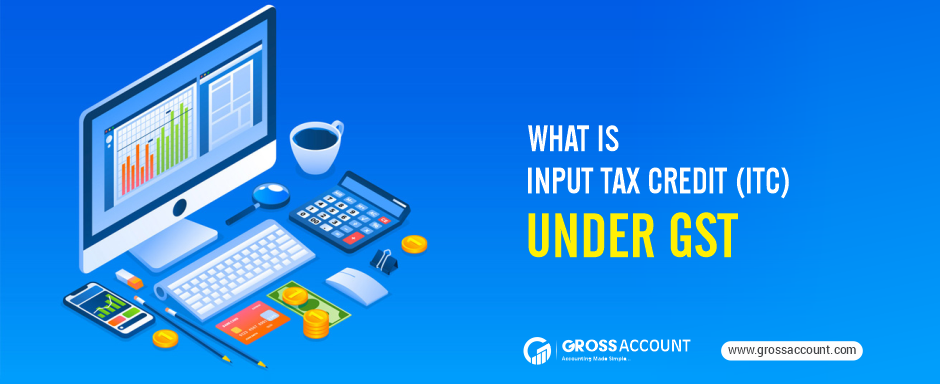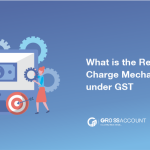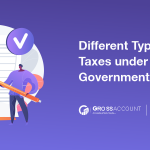Introduction
Input Tax Credit is a significant element under GST, which is understood by every company or business. Every company or industry pays tax on the goods/products.
ITC means to declare the credit of the GST paid on purchased products and services used for the business. Input Tax Credit(ITC) is a backbone of the GST, so; companies have to maintain the ITC properly.
Businesses or companies owners register under the Input Tax Credit. Under the GST rule, the input tax credit of IGST and GST Compensation Cess is available to the international merchants. For the profits, international merchants declare the GST Registration number (GSTIN) in the invoice.
For the validation of ITC, the customer EDI(Electronic Data Interchange- is the interchange of the information of businesses electronically using a standardized format) system is connected with the GST. Businesses use accounting software to maintain the tax. Through the accounting software, companies deduct or add the tax on the amount of the product or service.
What is input credit?
Input credit means that when paying tax on output, businesses or companies can reduce the tax because they already paid the products tax.
The Companies or businesses have to pay the tax to the government when purchasing the products or at the end of the supply chain management.
Companies or businesses are registered under the GST; then, they can claim input credit for tax paid by them on their purchase. The firms paid input tax more than the output tax, then ITC carried forward or climbed as a refund in the companies. The company recently registered under the GST, and they have to apply for the ITC; then, within 30 days, they are eligible for input credit tax.
For example, Company XYZ has charged Rs. 9000 as GST to his clients in a month, but they are only required to pay Rs. 8208 with the Govt as he has claimed Input Tax Credit of GST paid on goods and services used for the furtherance of his business.
In the past, there were various taxes available, and companies had to handle all this tax. But, now, companies have to take only one tax because of the introduction of the GST.
Businesses, companies, or manufacturers can claim Input Credit for tax paid if they are listed as manufacturer, supplier, agent, e-commerce operator, aggregator, etc.
Taxes under GST to claim ITC
Here are four taxes under GST to claim ITC; the following are the types of tax to claim Input Tax Credit.
1. CGST (Central Goods and Services Tax):
Central Goods and Service Tax is also known as the central tax. CGST charges on intra-state or intra-union territory on supply of goods or services or both. Businesses allowed for the first payment of CGST credits and the balance utilized for the amount of Input Credits also; these taxes not allowed for the amount of SGST.
2. SGST(State Goods and Service Tax):
The SGST is also known as state tax and also, SGST is the charge on supplies of the products or services within the same state. It allowed the first payment and utilized the payment of IGST, SGST is not allowed for payment of Central Goods and Service Tax.
3. UTGST(Union Territory Good and Service Tax):
UTGST is also known as Union Territory Tax which charges on products or services within the same union territory. UTGST allows the first payment of IGST and not allowed for the payment of CGST.
4. IGST(Integrated Good and Service Tax):
Integrated Good and Service Tax is also known as integrated tax, which charges on inter-state supply of goods or services of both. The credit of IGST allowed the first payment of IGST, then CGST, and the final balance for the amount of SGST / UTGST.
Also Read: THE DIFFERENCE : ACCOUNTS PAYABLE & ACCOUNTS RECEIVABLE
Conditions To Claim Input Tax Credit under GST
Register businesses or companies for the Input Tax credit through the following condition.
• Businesses have control of tax invoices or any other specified tax-paid documents.
• Companies received the products with “Bill to Ship” scenarios.
• Taxes are paid to the government by the suppliers
• Companies enhance the GST return.
Companies, suppliers, or businesses must be GST Compliant to claim input credits on the purchase of the products.
The following condition is used to claim the input credit. When companies or businesses receive the products in the bundle, then credit will be available against the tax bill upon the receipt of the last bunch.
Who is Eligible to claim ITC(Input Tax Credit) under GST?
The companies or businesses who are registered under the GST are eligible to pay the Input Tax Credits.
Businesses or companies who register in the GST then within 30 days are allowed to pay the ITC. The following companies like Transportation of passengers, Transportation of Goods Or Motor driving training uses taxable services.
Businesses or companies deliver a product or service of the same category to the shop owners, or maybe they are part of fusion supply, then credit would be available.
Example: Owen of the cosmetic shop purchased the cosmetic cream for their customer, then ITC is allowed.
The constructor of plant and machinery, who works as a contractor and one contract services is input for the other contract services then they pay the tax. Also, ITC is paid by the international merchant or A NRI person/dealer.
Who is not eligible to claim ITC(Input Tax Credit) under GST?
Every business or company pays different taxes. There are some categorized companies or service providers not allowed to pay the ITC.
• Motor Vehicles and Other transportation products
• Food And Beverage
• Outdoor catering
• Beauty treatment, cosmetic and plastic surgery
• Health services
• Fitness centre or club
• Health insurance and life insurances
• Goods and services on which GST will be paid under composition scheme
• Products that are stolen, written off, destroyed, gifted, free samples, or stolen.
All the above categories do not pay the input tax credits. They are paid regular tax as per the government rules.
Recommended for you: BUSINESS NEED COMPLETE GST BILLING SOFTWARE
How does ITC work at interstate and Intrastate transactions?
Now we look at how the Input Tax Credit works interstate and intrastate transactions.
For example,
There is a company AB who are registered under GST and eligible to pay ITC…
• At the end of the month, Company AB has 50,000 tax credits from both CGST and SGST.
• Based on the GST offsetting rule, company AB uses the CGST input tax worth RS. 50,000 to offset the CGST liability of RS. 57,000.
• Once the adjustment is completed, then the remaining CGST liability of the company AB is RS. 7000.
• Company AB pays the SGST worth RS. 50,000 and offset liability of RS. 57,000. And remaining the SGST liability amount is RS. 57,000.
• In the end, company AB has a total tax liability of RS. 14,000.
Here is another example…
• Company AB has an IGST credit of RS. 55,000, and tax liabilities of IGST RS. 30,000, SGST RS. 10,000, and CGST RS. 10,000.
• According to the tax offsetting under GST rule, IGST credit is used first to offset IGST tax; if any credit is left, it is used as liability for CGST liability then against SGST liability.
• Company AB uses their IGST credit to offset their IGST liability of Rs. 30000
• The remaining credit is Rs. 25,000(55000-30000) used to offset the CGST liability of RS. 10,000.
• After the adjusted liability of the CGST, the remaining credit RS.15,000(RS. 25,000 – RS. 10,000) from the IGST is used to offset the SGST liability RS. 10,000.
• After utilizing all the offset IGST, CGST, and last SGST company AB left the liability RS. 5000 (RS. 15,000 – RS. 10,000)
Conclusion
Today ITC, SGST, CGST, IGST have to handle the companies or businesses. They use accounting software to take all the taxes. The companies have paid all the taxes according to the condition and GST rules for maintaining the companies’ finance. Proper finance planning gives the opportunities to the companies to reach success for that, and businesses have to clear their tax history with the help of accounting software.






